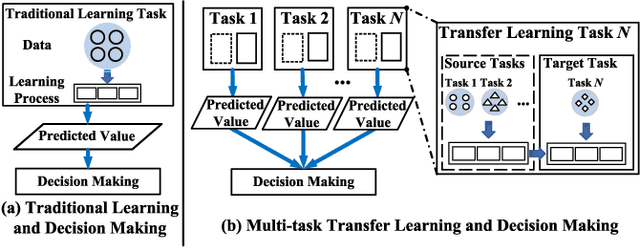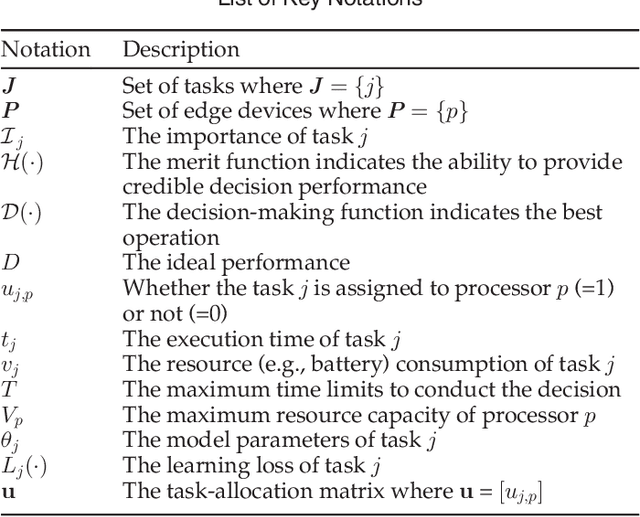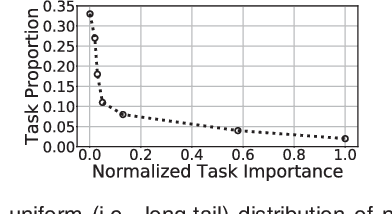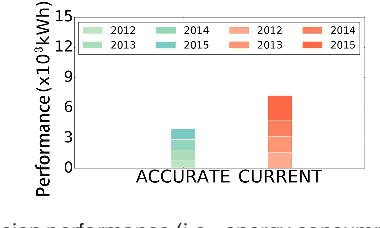Chuang Hu
Exploiting Text Semantics for Few and Zero Shot Node Classification on Text-attributed Graph
May 13, 2025



Abstract:Text-attributed graph (TAG) provides a text description for each graph node, and few- and zero-shot node classification on TAGs have many applications in fields such as academia and social networks. Existing work utilizes various graph-based augmentation techniques to train the node and text embeddings, while text-based augmentations are largely unexplored. In this paper, we propose Text Semantics Augmentation (TSA) to improve accuracy by introducing more text semantic supervision signals. Specifically, we design two augmentation techniques, i.e., positive semantics matching and negative semantics contrast, to provide more reference texts for each graph node or text description. Positive semantic matching retrieves texts with similar embeddings to match with a graph node. Negative semantic contrast adds a negative prompt to construct a text description with the opposite semantics, which is contrasted with the original node and text. We evaluate TSA on 5 datasets and compare with 13 state-of-the-art baselines. The results show that TSA consistently outperforms all baselines, and its accuracy improvements over the best-performing baseline are usually over 5%.
Robust Machine Unlearning for Quantized Neural Networks via Adaptive Gradient Reweighting with Similar Labels
Mar 18, 2025Abstract:Model quantization enables efficient deployment of deep neural networks on edge devices through low-bit parameter representation, yet raises critical challenges for implementing machine unlearning (MU) under data privacy regulations. Existing MU methods designed for full-precision models fail to address two fundamental limitations in quantized networks: 1) Noise amplification from label mismatch during data processing, and 2) Gradient imbalance between forgotten and retained data during training. These issues are exacerbated by quantized models' constrained parameter space and discrete optimization. We propose Q-MUL, the first dedicated unlearning framework for quantized models. Our method introduces two key innovations: 1) Similar Labels assignment replaces random labels with semantically consistent alternatives to minimize noise injection, and 2) Adaptive Gradient Reweighting dynamically aligns parameter update contributions from forgotten and retained data. Through systematic analysis of quantized model vulnerabilities, we establish theoretical foundations for these mechanisms. Extensive evaluations on benchmark datasets demonstrate Q-MUL's superiority over existing approaches.
Hound: Hunting Supervision Signals for Few and Zero Shot Node Classification on Text-attributed Graph
Sep 01, 2024



Abstract:Text-attributed graph (TAG) is an important type of graph structured data with text descriptions for each node. Few- and zero-shot node classification on TAGs have many applications in fields such as academia and social networks. However, the two tasks are challenging due to the lack of supervision signals, and existing methods only use the contrastive loss to align graph-based node embedding and language-based text embedding. In this paper, we propose Hound to improve accuracy by introducing more supervision signals, and the core idea is to go beyond the node-text pairs that come with data. Specifically, we design three augmentation techniques, i.e., node perturbation, text matching, and semantics negation to provide more reference nodes for each text and vice versa. Node perturbation adds/drops edges to produce diversified node embeddings that can be matched with a text. Text matching retrieves texts with similar embeddings to match with a node. Semantics negation uses a negative prompt to construct a negative text with the opposite semantics, which is contrasted with the original node and text. We evaluate Hound on 5 datasets and compare with 13 state-of-the-art baselines. The results show that Hound consistently outperforms all baselines, and its accuracy improvements over the best-performing baseline are usually over 5%.
TreeCSS: An Efficient Framework for Vertical Federated Learning
Aug 03, 2024Abstract:Vertical federated learning (VFL) considers the case that the features of data samples are partitioned over different participants. VFL consists of two main steps, i.e., identify the common data samples for all participants (alignment) and train model using the aligned data samples (training). However, when there are many participants and data samples, both alignment and training become slow. As such, we propose TreeCSS as an efficient VFL framework that accelerates the two main steps. In particular, for sample alignment, we design an efficient multi-party private set intersection (MPSI) protocol called Tree-MPSI, which adopts a tree-based structure and a data-volume-aware scheduling strategy to parallelize alignment among the participants. As model training time scales with the number of data samples, we conduct coreset selection (CSS) to choose some representative data samples for training. Our CCS method adopts a clustering-based scheme for security and generality, which first clusters the features locally on each participant and then merges the local clustering results to select representative samples. In addition, we weight the samples according to their distances to the centroids to reflect their importance to model training. We evaluate the effectiveness and efficiency of our TreeCSS framework on various datasets and models. The results show that compared with vanilla VFL, TreeCSS accelerates training by up to 2.93x and achieves comparable model accuracy.
Generative and Contrastive Paradigms Are Complementary for Graph Self-Supervised Learning
Oct 24, 2023



Abstract:For graph self-supervised learning (GSSL), masked autoencoder (MAE) follows the generative paradigm and learns to reconstruct masked graph edges or node features. Contrastive Learning (CL) maximizes the similarity between augmented views of the same graph and is widely used for GSSL. However, MAE and CL are considered separately in existing works for GSSL. We observe that the MAE and CL paradigms are complementary and propose the graph contrastive masked autoencoder (GCMAE) framework to unify them. Specifically, by focusing on local edges or node features, MAE cannot capture global information of the graph and is sensitive to particular edges and features. On the contrary, CL excels in extracting global information because it considers the relation between graphs. As such, we equip GCMAE with an MAE branch and a CL branch, and the two branches share a common encoder, which allows the MAE branch to exploit the global information extracted by the CL branch. To force GCMAE to capture global graph structures, we train it to reconstruct the entire adjacency matrix instead of only the masked edges as in existing works. Moreover, a discrimination loss is proposed for feature reconstruction, which improves the disparity between node embeddings rather than reducing the reconstruction error to tackle the feature smoothing problem of MAE. We evaluate GCMAE on four popular graph tasks (i.e., node classification, node clustering, link prediction, and graph classification) and compare with 14 state-of-the-art baselines. The results show that GCMAE consistently provides good accuracy across these tasks, and the maximum accuracy improvement is up to 3.2% compared with the best-performing baseline.
BenchTemp: A General Benchmark for Evaluating Temporal Graph Neural Networks
Aug 31, 2023Abstract:To handle graphs in which features or connectivities are evolving over time, a series of temporal graph neural networks (TGNNs) have been proposed. Despite the success of these TGNNs, the previous TGNN evaluations reveal several limitations regarding four critical issues: 1) inconsistent datasets, 2) inconsistent evaluation pipelines, 3) lacking workload diversity, and 4) lacking efficient comparison. Overall, there lacks an empirical study that puts TGNN models onto the same ground and compares them comprehensively. To this end, we propose BenchTemp, a general benchmark for evaluating TGNN models on various workloads. BenchTemp provides a set of benchmark datasets so that different TGNN models can be fairly compared. Further, BenchTemp engineers a standard pipeline that unifies the TGNN evaluation. With BenchTemp, we extensively compare the representative TGNN models on different tasks (e.g., link prediction and node classification) and settings (transductive and inductive), w.r.t. both effectiveness and efficiency metrics. We have made BenchTemp publicly available at https://github.com/qianghuangwhu/benchtemp.
On-edge Multi-task Transfer Learning: Model and Practice with Data-driven Task Allocation
Jul 06, 2021



Abstract:On edge devices, data scarcity occurs as a common problem where transfer learning serves as a widely-suggested remedy. Nevertheless, transfer learning imposes a heavy computation burden to resource-constrained edge devices. Existing task allocation works usually assume all submitted tasks are equally important, leading to inefficient resource allocation at a task level when directly applied in Multi-task Transfer Learning (MTL). To address these issues, we first reveal that it is crucial to measure the impact of tasks on overall decision performance improvement and quantify \emph{task importance}. We then show that task allocation with task importance for MTL (TATIM) is a variant of the NP-complete Knapsack problem, where the complicated computation to solve this problem needs to be conducted repeatedly under varying contexts. To solve TATIM with high computational efficiency, we propose a Data-driven Cooperative Task Allocation (DCTA) approach. Finally, we evaluate the performance of DCTA by not only a trace-driven simulation, but also a new comprehensive real-world AIOps case study that bridges model and practice via a new architecture and main components design within the AIOps system. Extensive experiments show that our DCTA reduces 3.24 times of processing time, and saves 48.4\% energy consumption compared with the state-of-the-art when solving TATIM.
* 15 pages, published in IEEE TRANSACTIONS ON Parallel and Distributed Systems, VOL. 31, NO. 6, JUNE 2020
 Add to Chrome
Add to Chrome Add to Firefox
Add to Firefox Add to Edge
Add to Edge